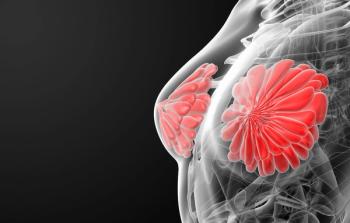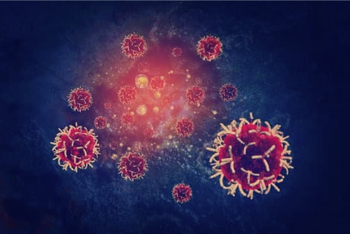
Marking a New Pathway for Hormone-Resistant Breast Cancer Treatment
P13K inhibitors, now in the earliest stages of clinical testing, receive hopeful attention as an alternative for patients with aromatase inhibitor resistance. A new study proposes how they should be used, and for whom.
The PI3K pathway receives plenty of hopeful attention as an alternative for ER+ patients in whom hormonal therapy has come to a dead end, with aromatase inhibitor resistance. But oncologists are rightfully tentative about this, because PI3K is central to so many processes beyond the mammary epithelium.
Signals feeding into Akt and their relay to downstream target molecules and cellular processes. Source: Wickenden and Watson,
Breast Cancer Research
2010 12:202 doi:10.1186/bcr2558
Now, while several drugs that target PI3K are in the earliest stages of clinical testing, cancer researchers at Washington University in St. Louis have published an elegant set of experiments that propose how inhibitors of PI3K could (or should) be used, and for whom. The
Not slower growth, but death
Hormone treatment slows the growth and proliferation of breast cancer cells, but it does not kill them. The hope is that PI3K inhibitors can have that effect.
Responding to extracellular signals including the HER family and the insulin growth factor receptor, PI3K (phosphoinositide 3-kinase) catalyzes the first step in a
The new studies show that BKM120 and BGT226 both induced high levels of apoptosis in ER+ breast cancer cell lines, notably those with mutations in PIK3CA but also some with mutations in PTEN, which reverses the catalytic actions of PI3K. Everolimus showed only a modest effect. Adding estrogen to the cell lines reduced this tumor-killing activity, but then pumping up the dose of the drugs progressively restored it.
Emulating aromatase inhibitors
To emulate the clinical situation, the team also grew some samples of the tumor cell lines in a medium that had been stripped of hormones, either for 9 months or for 1-3 weeks, before exposing them to the PI3K inhibitors. It required higher concentrations of BKM120 and BGT226 to reach the same level of apoptosis in these estrogen-deprived cells, but adding fulvestrant (which down-regulates the estrogen receptor) strongly potentiated cell death. Re-exposing the cells to estradiol had the same effect.
"A combination of fulvestrant and a PI3K pathway inhibitor may be an effective approach for aromatase inhibitor resistant advanced breast cancer," write the Washington University researchers, especially for relapsed ER+ patients with a mutation in PI3KCA.
The modest effects of Everolimus on these estrogen-deprived cells could help to explain the negative results of a
In 2009, researchers at Memorial Sloan-Kettering Cancer Center complicated the picture by demonstrating an
Quite the contrary; about half of biopsy samples from 51 patients with recurrent or metastatic breast cancer show that mutation, according to the Washington University studies. Patients with this mutation tend to relapse later than others, although analysis of this small sample suggested that their overall survival is no better.
For the one-fifth of ER+ patients with the PI3KCA mutation, suggests oncologist Jose Baselga of Massachusetts General Hospital, "it could well be that a less aggressive therapy, including PI3K inhibitors and hormonal therapies, should be considered." The Washington University team has reached the same conclusion: Estrogen deprivation plus PI3K inhibitors for estrogen-dependent ER+ tumors with the mutation, and for ER+ patients with aromatase inhibitor resistance, fulvestrant plus a PI3K inhibitor.
Predictably, that's not the end of the story. Vanderbilt University researchers reported a few weeks ago that
Newsletter
Stay up to date on recent advances in the multidisciplinary approach to cancer.






















































































